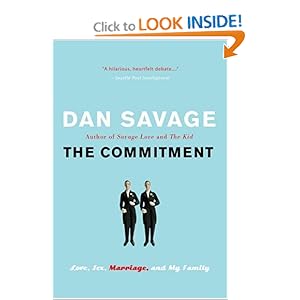I had a favorite English professor once who got upset with people who wanted to boil a poem (or whatever we were reading) down to a message. He would insist that the medium was important, and that it was part of what excites us about literature. "If he'd wanted to write a message he would have written a message. He wrote a novel. If you want a message, that's like asking why the ballet dancer doesn't just walk across the stage--she'd get there a lot faster."
You would think that in business communication, you'd pretty much want to walk across the stage. In certain cases, you'd want to walk in a way that made people want to follow you, or make people remember that you walked, but ultimately, the medium shouldn't be the message--it should be effective, efficient, and virtually invisible.
Unfortunately, every tool we're given for business communication is a double-edged sword (on account of the humans, no doubt--pesky bastards). We get so many e-mails every day that Merlin Mann can inspire people with Inbox Zero. We get spreadsheets of breathtaking scope that are linked in so many places that it takes an Excel guru just to figure out whether the spreadsheet speaks the truth. (Spreadsheets lie more often than you might think--and not always because the person who created them wants them to.) And above all, we get information of every size, shape, and import wedged into the all-powerful Power Point presentation.
Although I use Power Point every day and see it as tremendously useful, I do think it can be a crutch that encourages terrible, terrible habits (I love to be read to, but I can read your slide--honest). I also think that most office culture cripples people who want to cultivate good Power Point habits. I'm regularly forced by management to revise my Power Points because they have to be useful to people who won't see my presentation.
I would argue that what you want in that case is maybe a word document or a website with some illustrations--something that would be updated at crucial moments rather than being passed down like a sacred artifact that eventually loses its context, integrity, and relevance, but no. The general rule of presentations in the workplace is that the speaker should be completely irrelevant, so that the presentation may be preserved for posterity and used to train, lead, or inform people after you've been laid off. It can then also be read by managers who won't bother to show up for the presentation they've asked you to give. I'd like to see a culture in which people who respect you show up for your presentation and people who don't just don't get the information, but unfortunately, Ms. Dobbs doesn't run American business (more's the pity).
So this week, while I was slaving away at such a presentation that would undoubtedly be stolen, printed, hidden in someone's cube, and unearthed years later when our entire enterprise landscape will (God willing) have changed so much that it won't be accurate or relevant--at which point someone will attempt to apply it to their daily job--I came across this wacky time capsule. The truly striking thing is that every slide is not covered with thousands of words in microscopic font. And yet, I'm not sure I'd relish a workplace where this is the sort of thing I was expected to create. I guess it proves that it's not the tools--it's us.
Courtesy of Big Contrarian, whose blog I discovered thanks to Merlin Mann.
Friday, August 01, 2008
Subscribe to:
Post Comments (Atom)


No comments:
Post a Comment